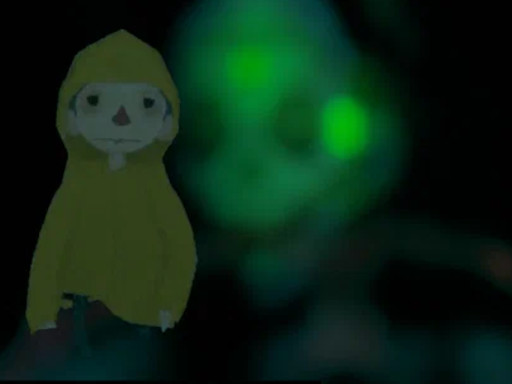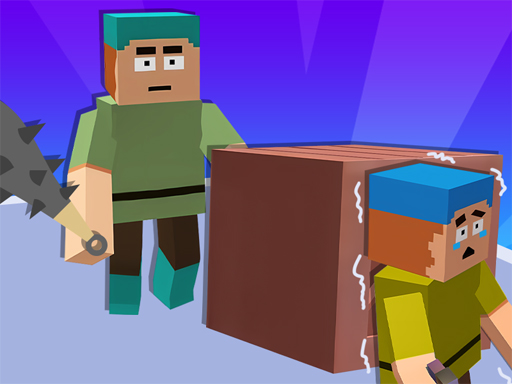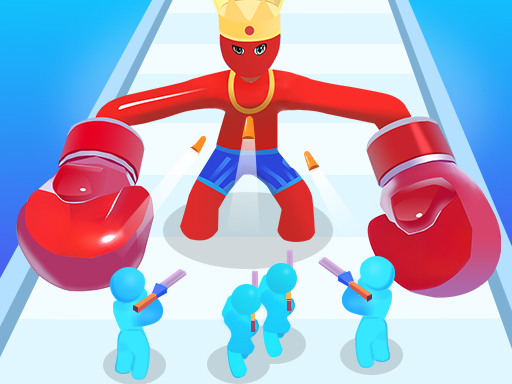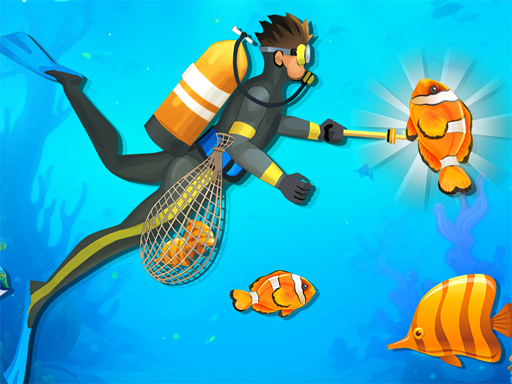
Entering the Shadows: Welcome to the Hospital
A Place Where Fear Lurks
Have you ever walked into a dark, abandoned hospital and felt every hair on your neck stand up? Well, in this game, you don’t have to imagine it—you live it. Escape the Abandoned Psychiatric Hospital drops you into a creepy, labyrinthine world full of lurking monsters, hidden traps, and the constant whisper of danger.
From the moment you step into the first dimly lit hallway, the tension is palpable. The flickering lights, the groaning floorboards, and that distant screech make your heart race. And suddenly, the game isn’t just about moving—it’s about surviving.
“Did you hear that?” you whisper, even though no one else is there.
A door slams somewhere in the distance. Your pulse quickens.
The hospital feels alive, in the most terrifying way. Every corner could hide a trap, a shadow, or worse—the monster that stalks the corridors.
Why This Game Hooks You
There’s a strange thrill in vulnerability. You only have your wits, reflexes, and courage. Unlike many horror games that rely on combat, this one challenges you with movement, timing, and observation.
Even kids above a certain age (with parental supervision) or thrill-seeking adults will find themselves learning focus, patience, and pattern recognition as they navigate the creepy hospital corridors.
Transition: But before you can run from the shadows, you need to understand the tools at your disposal—controls, objectives, and how the game mechanics work.
The Mechanics: How to Move and Survive
Controls That Keep You Alive
The game keeps mechanics simple, allowing you to focus on strategy rather than complex combos:
-
Arrow Keys (or swipe on mobile): Move up, down, left, and right.
-
Spacebar (or swipe up): Jump over traps and gaps.
-
Swipe down (on mobile): Duck or slide under obstacles.
With these controls, your goal is straightforward: avoid traps, dodge monsters, and find the exit. Sounds simple—but every hallway, every room, and every shadow tests your reflexes.
| Action | Control | Purpose |
|---|---|---|
| Move Up/Down/Left/Right | Arrow keys / swipe | Navigate corridors and avoid hazards |
| Jump | Spacebar / swipe up | Clear gaps or tripwires |
| Duck | Swipe down | Avoid low obstacles or monster attacks |
| Observe | Camera / view | Spot traps and clues early |
| Survival | Timing + reflex | Stay alive and progress |
The Role of Traps and Monsters
The hospital isn’t empty. Rusty floors give way, broken tiles hide spikes, and some rooms contain monsters that patrol predictable—but deadly—paths.
Have you ever noticed how your mind starts predicting the pattern of a monster? That’s when the game gets interesting. It’s less about luck and more about observation, timing, and strategy.
Transition: Now that we know the mechanics, let’s talk about step-by-step strategies for surviving this terrifying place.
Step-by-Step Survival Strategies
For Children (Supervised Play)
Even younger players can enjoy the suspense safely with guidance:
-
Start Slow: Move carefully, watching for traps. Rushing often leads to early failure.
-
Observe Monster Paths: Most monsters have predictable patrols—study them before dashing.
-
Use Jump and Duck Wisely: Timing is critical to avoid traps.
-
Mark Safe Zones: Mentally note areas where monsters cannot reach.
-
Stay Calm: Panic leads to mistakes—encourage deep breaths between runs.
For General Players
For teens and adults, the challenge ramps up:
-
Memory Mapping: Remember trap locations for future runs.
-
Pattern Exploitation: Monsters often pause before turning—time your move.
-
Resource Management: Some levels have limited safe spots; plan movement accordingly.
-
Risk Assessment: Decide when to sprint versus take cautious steps.
| Level Type | Objective | Recommended Strategy |
|---|---|---|
| Corridor Maze | Avoid traps and monsters | Observe and memorize monster paths |
| Trap-Filled Rooms | Cross gaps or spikes | Jump/duck precisely and maintain rhythm |
| Monster Patrol Areas | Escape undetected | Time movements with patrols; pause if necessary |
| Endgame Exit | Reach the exit safely | Combine all previous skills; maintain focus |
Common Mistakes
-
Rushing without observing
-
Ignoring trap patterns
-
Focusing too much on the monster and missing environmental hazards
Transition: Beyond raw survival, the game also rewards creative thinking and careful planning, which we’ll explore next.
Strategic Thinking: How to Outsmart the Hospital
Reading the Environment
The hospital isn’t just a spooky backdrop—it’s a puzzle. Every corridor, flickering light, and pile of debris is a clue.
-
Are there gaps in the floorboards?
-
Is that shadow a harmless curtain or a lurking monster?
“I thought I could sprint past that hallway,” I muttered, heart racing. “Then the trapdoor betrayed me.”
Movement Patterns and Timing
Many monsters have predictable routines. Use them to your advantage:
- Wait for them to turn away.
- Sprint during their pause.
- Use vertical movement to bypass low or high threats.
Table: Monster and Trap Interaction
| Threat | Behavior | Strategy |
|---|---|---|
| Walking Monster | Patrols corridors | Move when they pause or turn |
| Stationary Monster | Ambush | Duck or wait; do not trigger |
| Floor Traps | Hidden until stepped on | Observe floor patterns; jump or sidestep |
| Ceiling Hazards | Drops from above | Move quickly when you spot shadows |
Transition: Now that we’ve mastered movement and strategy, let’s explore emotional engagement and storytelling—why this game is more than just a scary maze.
Emotional Engagement: Fear, Humor, and Curiosity
Mini Dialogues & Storytelling
The game excels at storytelling without words. Ambient sounds, distant screams, and creaking doors create a narrative. Players often talk to themselves or companions as they play:
“Okay, door to the left looks safe…maybe.”
“Don’t make a sound. Not one sound!”
This interactive inner dialogue strengthens focus and engagement.
Pride and Curiosity
Completing a challenging level isn’t just relief—it’s pride. Players often replay levels to perfect their runs, testing memory, reflexes, and courage.
Have you ever noticed how your heartbeat syncs with the monster’s patrol? That small, subconscious connection makes every successful escape deeply satisfying.
Transition: Of course, mastering fear is only part of the game. Let’s dive into expert tips and tricks for surviving the hospital like a pro.
Expert Tips & Tricks
Advanced Player Techniques
- Split Timing: Alternate between sprinting and pausing to trick monsters.
- Corner Observation: Monsters often ignore corners—use these to plan moves.
- Trap Anticipation: Study environmental cues before stepping forward.
- Mental Maps: Build a map of each level to predict hazards.
- Controlled Panic: Keep calm even when monsters appear suddenly.
Bullet-Point Quick Tips
- 🏃♂️ Move deliberately, don’t rush.
- 👀 Always watch both monster and trap simultaneously.
- 🕹️ Jump or duck just before hazard triggers.
- 🧩 Learn patterns, not random movement.
- 🎮 Take breaks to reduce tension and improve focus.
Transition: Once you master these techniques, gameplay becomes less about fear and more about strategy, skill, and creativity.
Replayability: Endless Challenges
New Layouts and Increasing Difficulty
Each run introduces slight changes—trap placement shifts, monster speed varies, and new corridors appear. This ensures that even seasoned players remain alert and engaged.
| Difficulty Level | Change in Gameplay | Player Focus |
|---|---|---|
| Easy | Fewer traps, slower monsters | Learn mechanics |
| Medium | More traps, faster monsters | Apply timing & strategy |
| Hard | Complex layouts, unpredictable monsters | Master planning & reflexes |
| Nightmare | Full patrol patterns + hidden traps | Expert memorization & focus |
The Thrill of Mastery
As you replay, survival is no longer just luck—it’s about perfecting timing, understanding monster patterns, and trusting instincts. The satisfaction is profound, almost meditative.
Transition: And while the hospital is scary, the game also offers a unique educational angle.
Educational Benefits: Learning Through Fear
- Pattern Recognition: Study monster patrols and trap placement.
- Problem-Solving: Decide optimal routes through dynamic hazards.
- Hand-Eye Coordination: Refined through jump and duck mechanics.
- Critical Thinking: Choose risk vs. reward scenarios wisely.
For additional learning tie-ins, National Geographic Kids offers resources on observation and critical thinking that complement strategic gameplay.
Transition: Finally, let’s consider sharing your epic escapes and engaging with the community.
Conclusion: Fear, Fun, and Flow
Why We Love This Game
Escape the Abandoned Psychiatric Hospital delivers more than scares. It teaches patience, focus, and strategy—all wrapped in a high-adrenaline, visually engaging package.
Whether you’re a child learning reflexes, a parent playing alongside, or a thrill-seeker chasing adrenaline, this game blends fear, humor, and challenge into something unforgettable.
Parting Thought
Every hallway survived, every monster avoided, every trap dodged is a small victory. And when you finally escape the hospital, it’s not just a game—it’s a testament to courage, skill, and a little bit of luck.
So, take a deep breath, steady your hands, and step into the shadows. The hospital is waiting. 🏥👹
For Your Social 🌟
Celebrate your survival skills! Share screenshots, discuss strategies, or boast about beating the hardest levels.
Suggested Hashtags:
#PsychHospitalEscape #ZombieGameFun #HorrorStrategy #EscapeGaming #MonsterPatrol #CriticalThinkingGaming #GamingWithHeart #ScaryButFun






